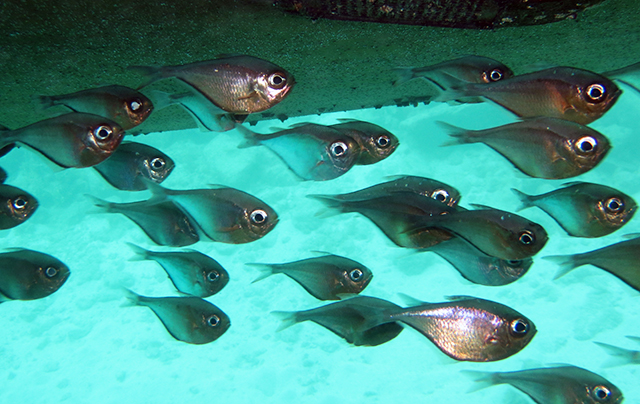| Pempheridae (Sweepers) |
| 15 cm TL (male/unsexed) |
|
reef-associated; marine; depth range 3 - 30 m |
| Western Atlantic: southeastern Florida, USA and Bahamas to Brazil. |
|
Dorsal spines (total): 5-5; Dorsal soft rays (total): 8-9; Anal spines: 3-3; Anal soft rays: 32-34. Ventral profile deeply curved in front of anal fin, tapering upward to slender caudal peduncle. Mouth very oblique (Ref. 26938). Scales ctenoid along the back posterior to dorsal fin and ventrally on head and body, otherwise cycloid, coppery with a dark band at base of anal fin; young nearly transparent, silvery over abdomen (Ref. 13442). |
| Occurs in clear water with coral bottom. Form aggregations in dark crevices and caves (Ref. 9710). Nocturnal (Ref. 9626). Its name probably refers to the juveniles, which are so transparent that the backbone can be seen in the living fish (Ref. 26938). Feeds on zooplankton, particularly the larval stages of invertebrates (Ref. 13442). |
|
Least Concern (LC); Date assessed: 29 January 2013 Ref. (130435)
|
| harmless |
Source and more info: www.fishbase.org. For personal, classroom, and other internal use only. Not for publication.

